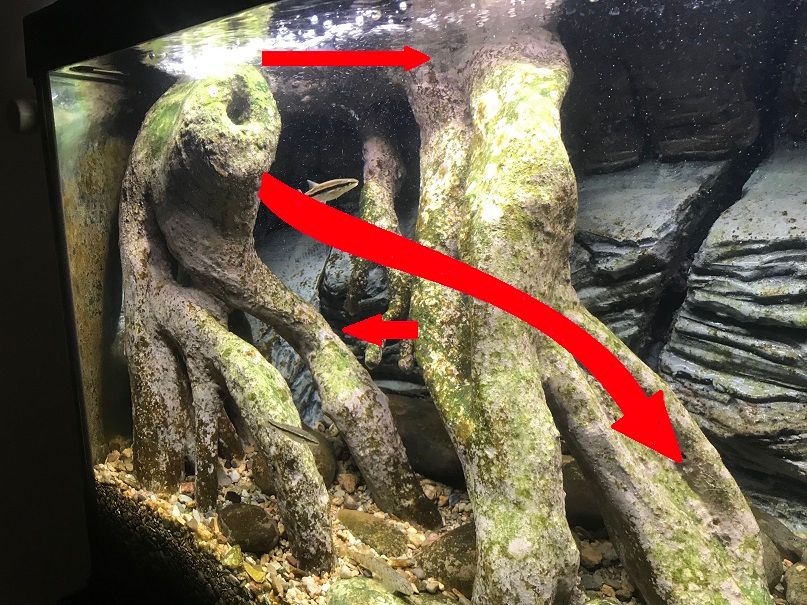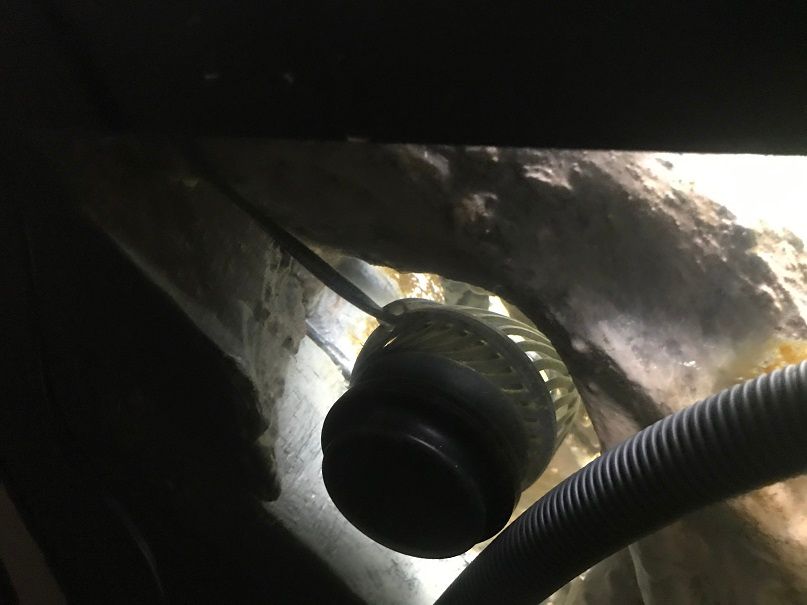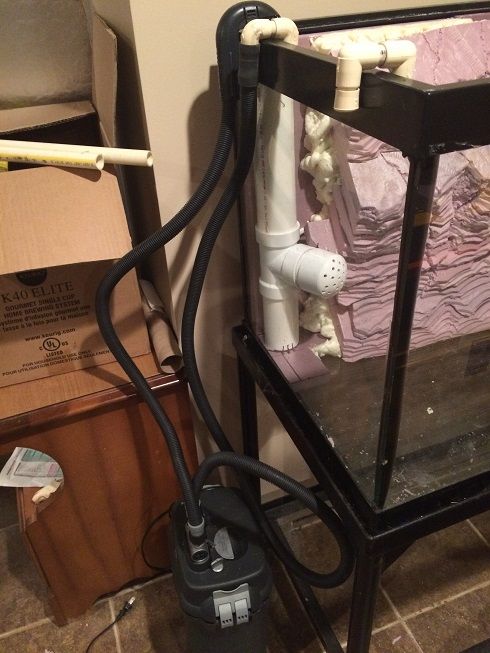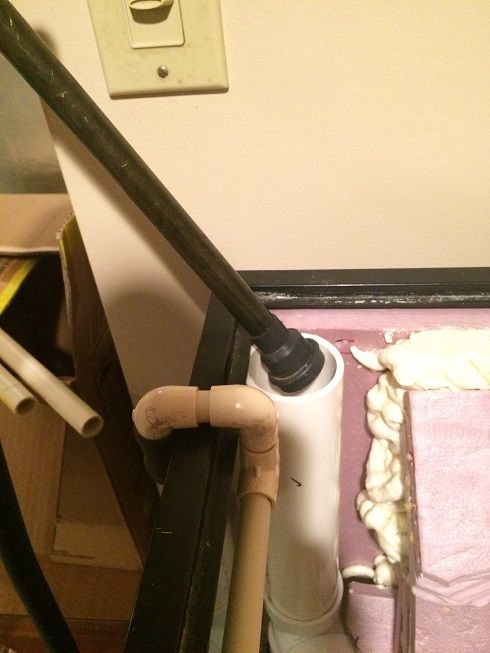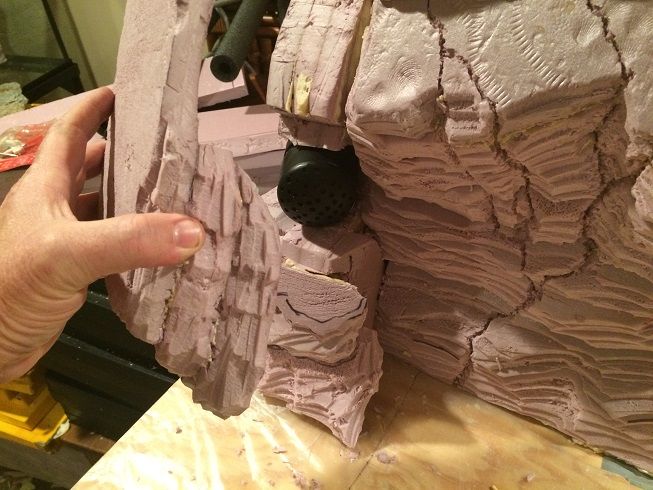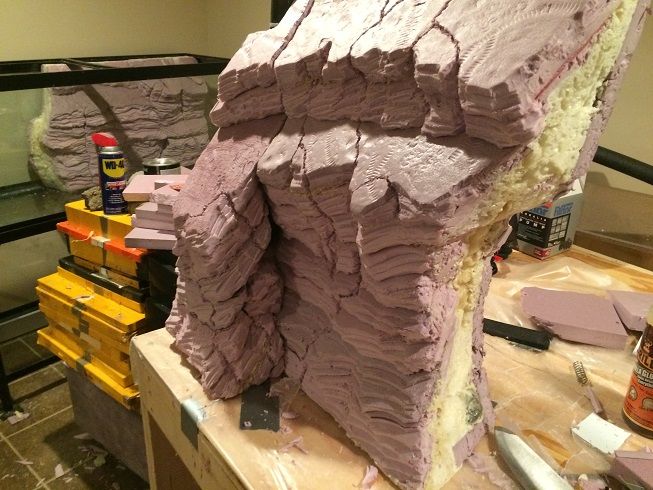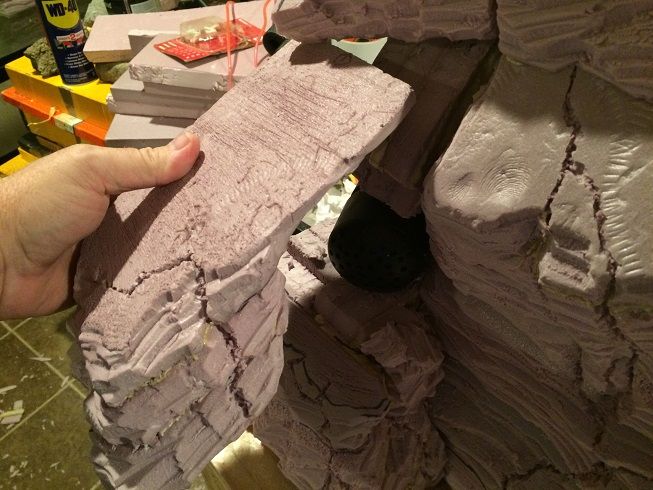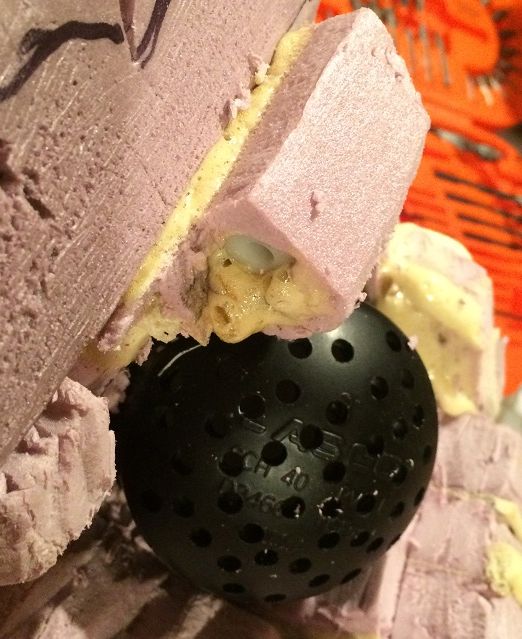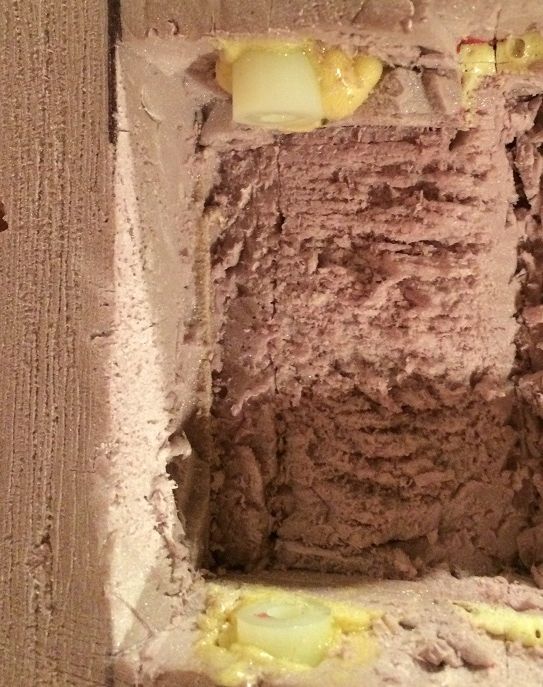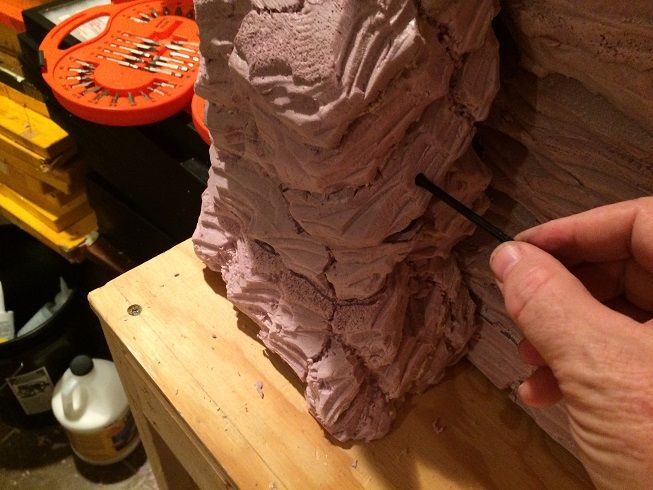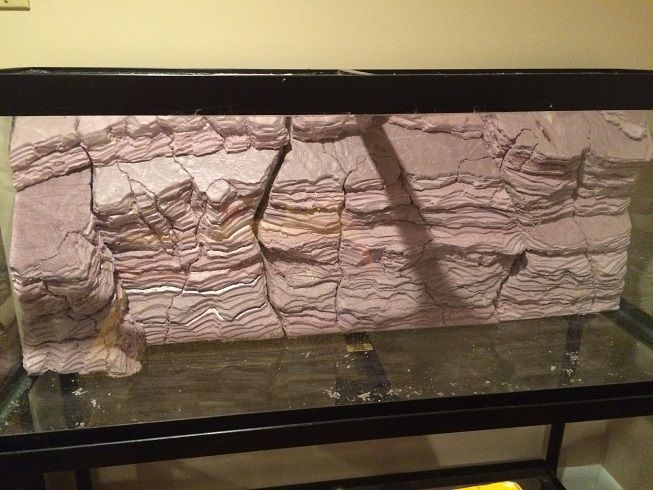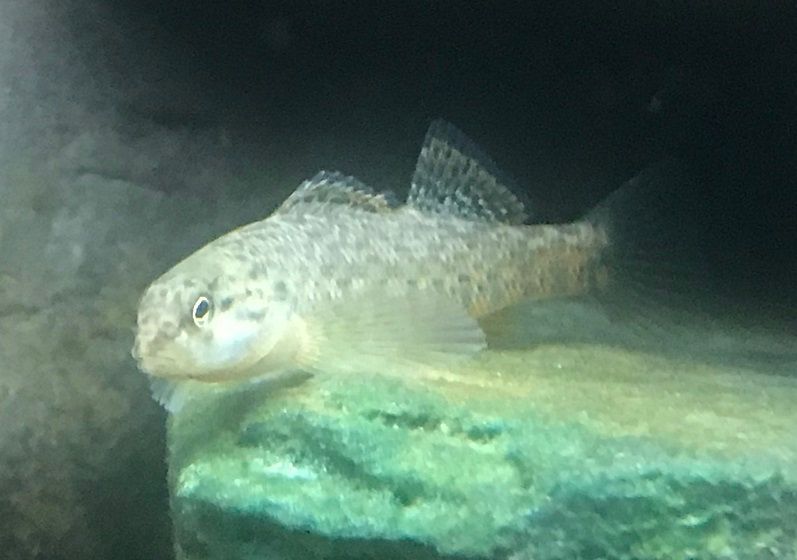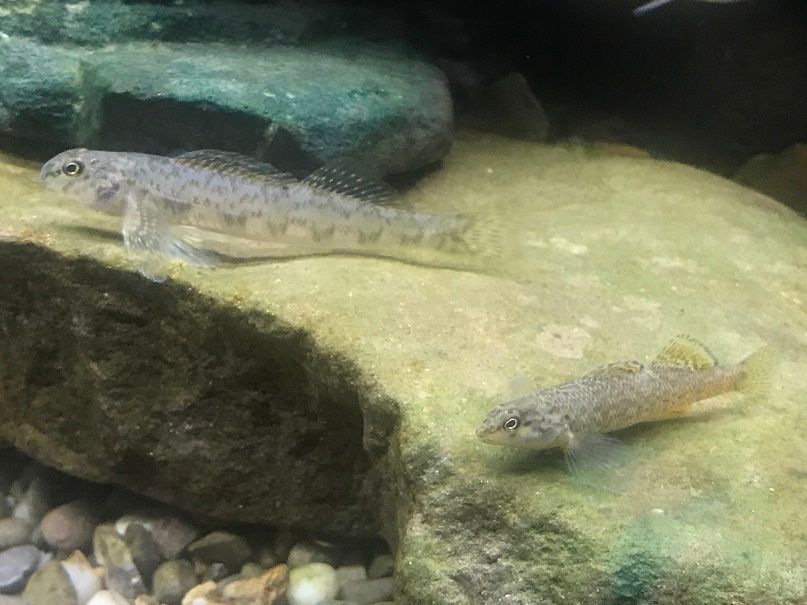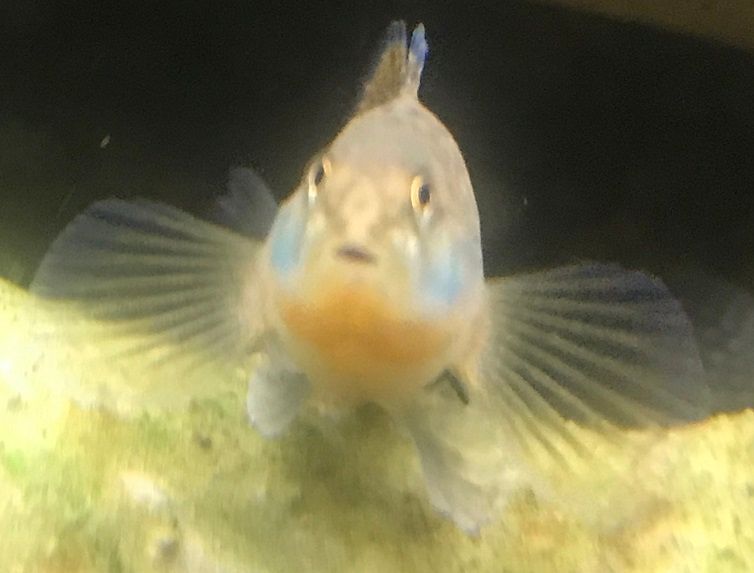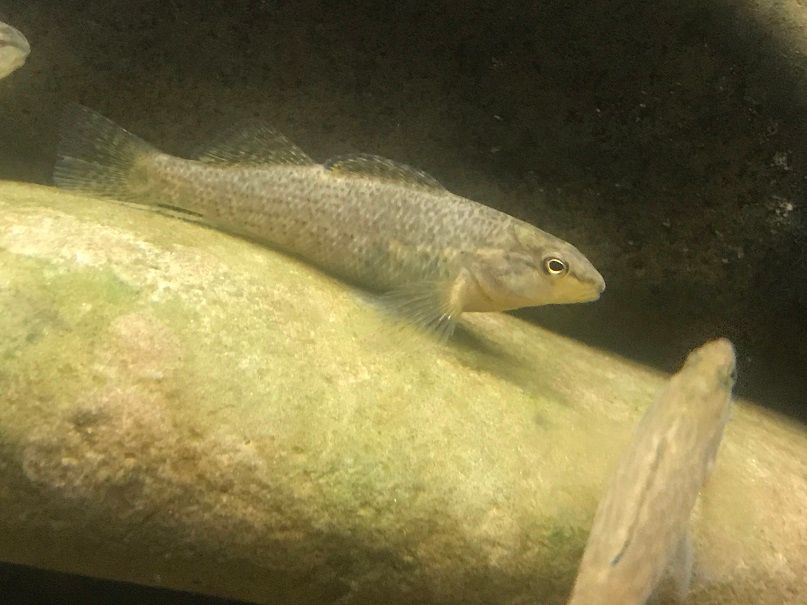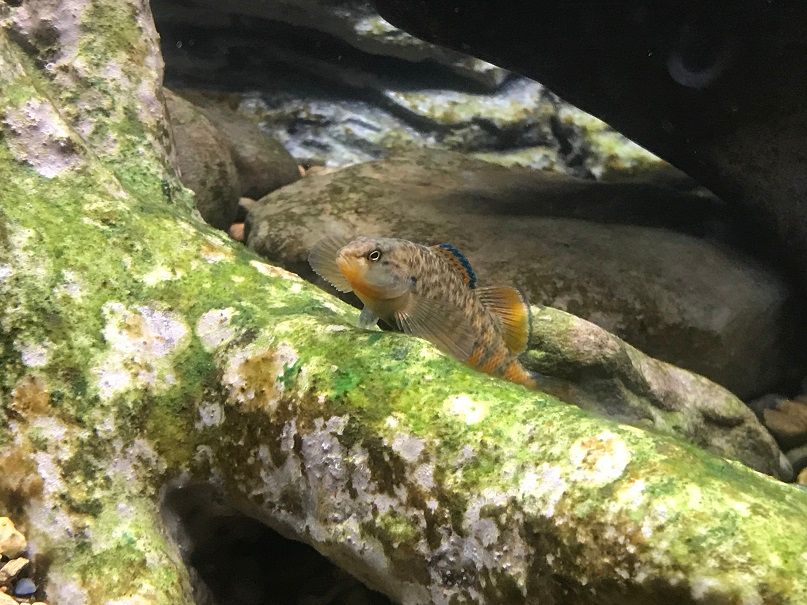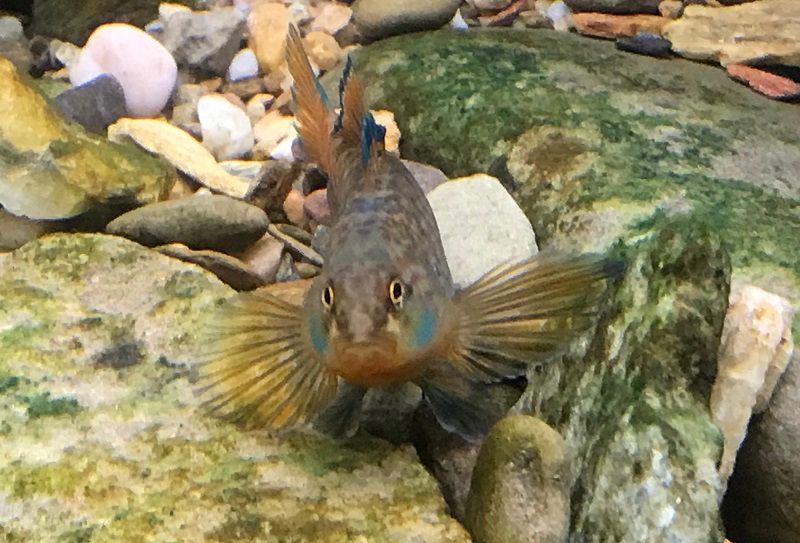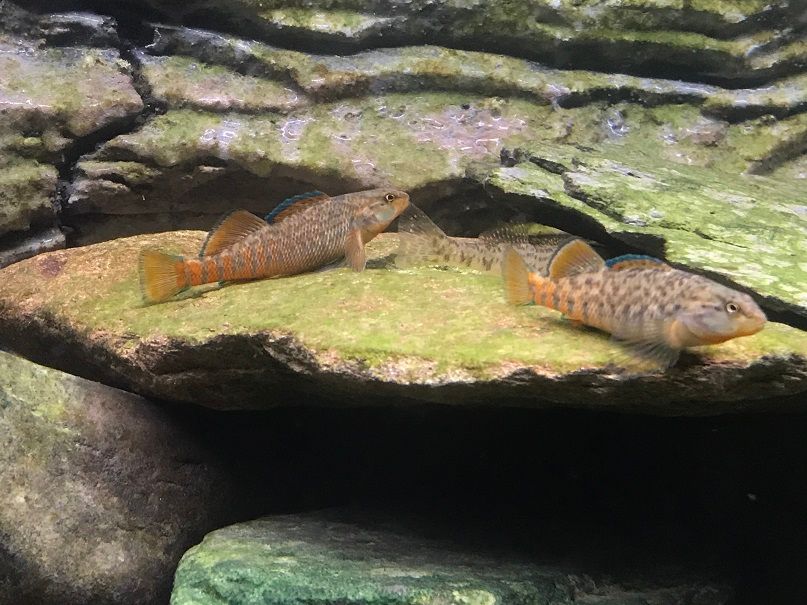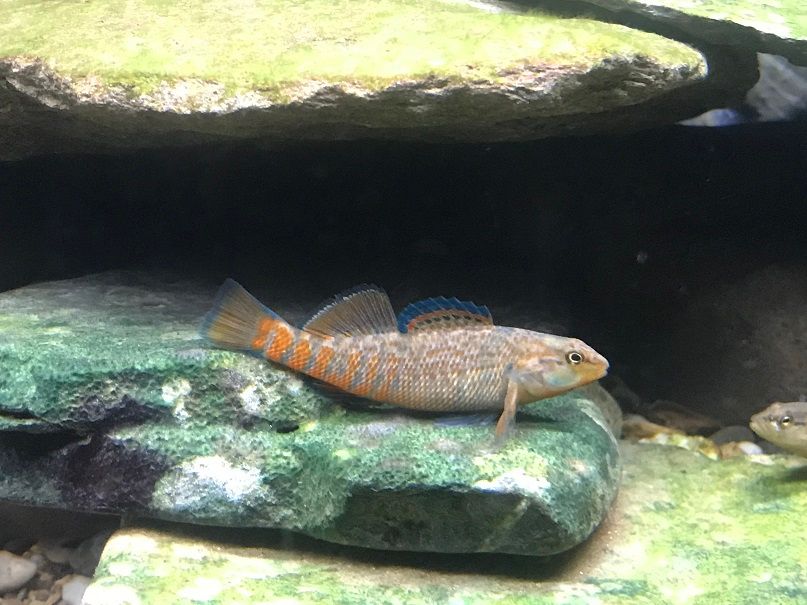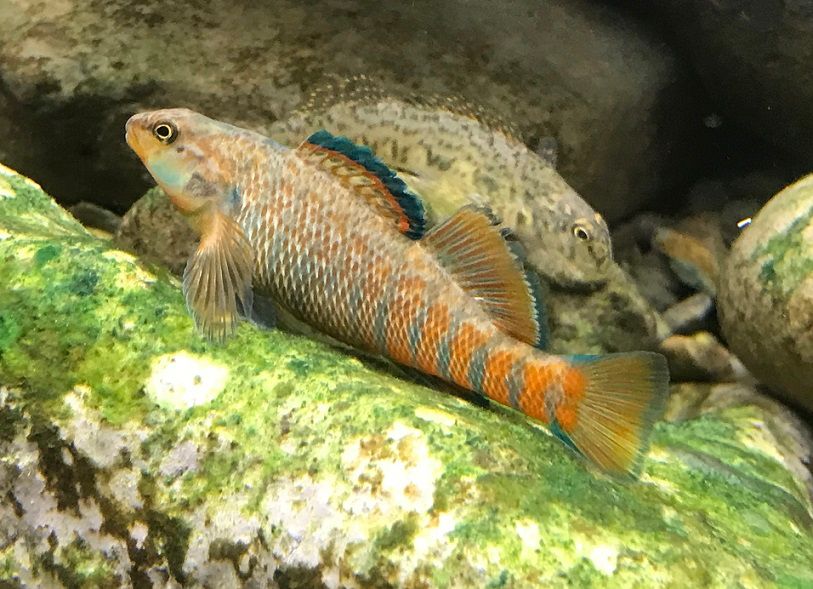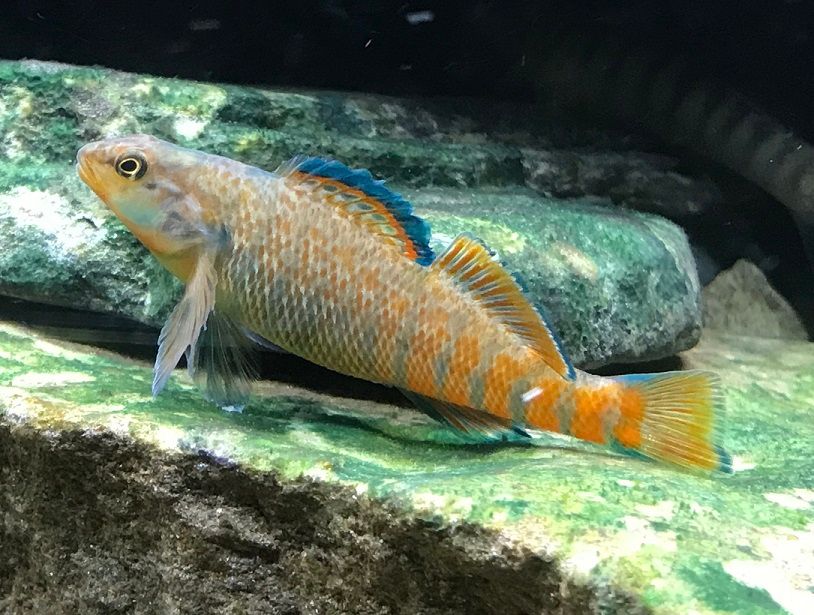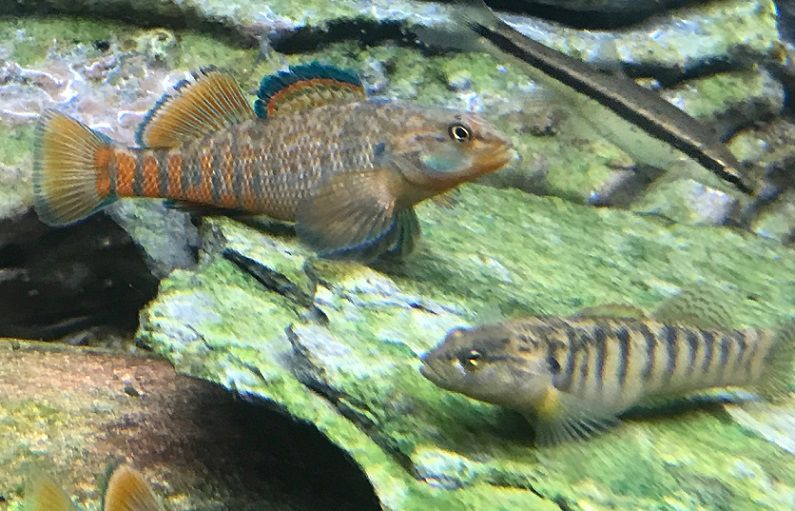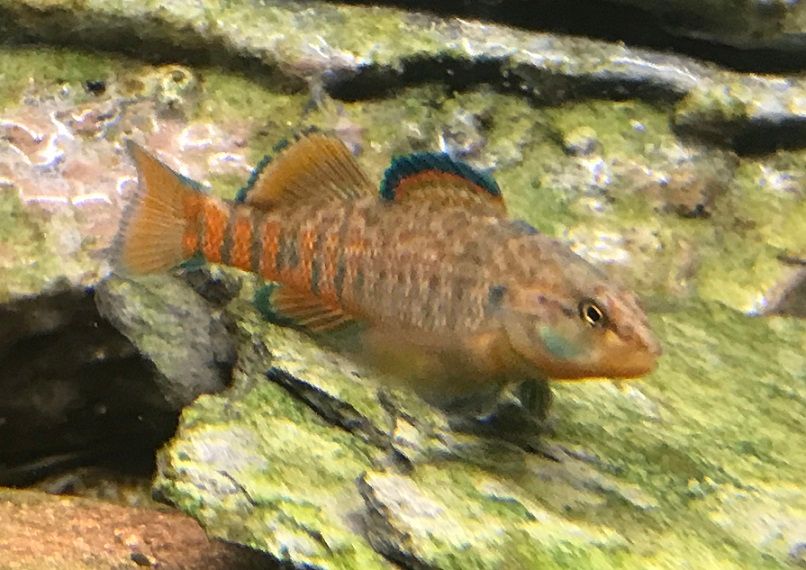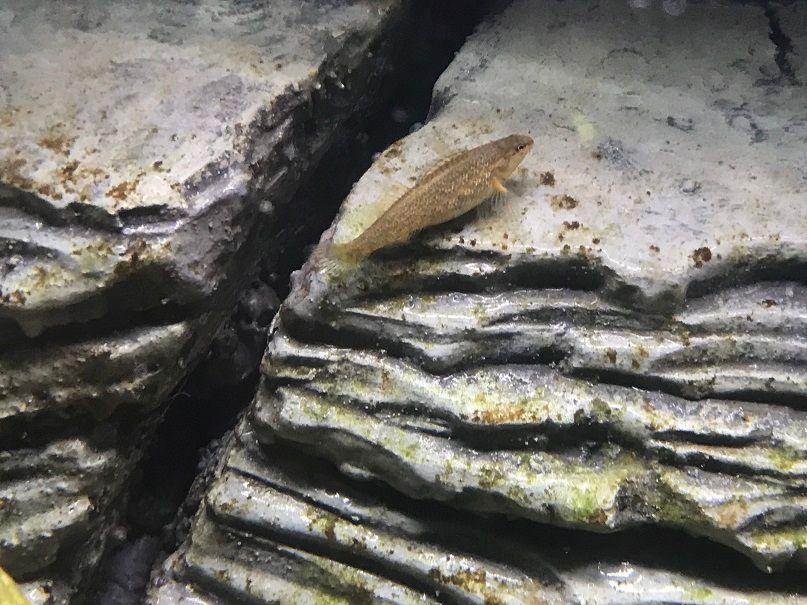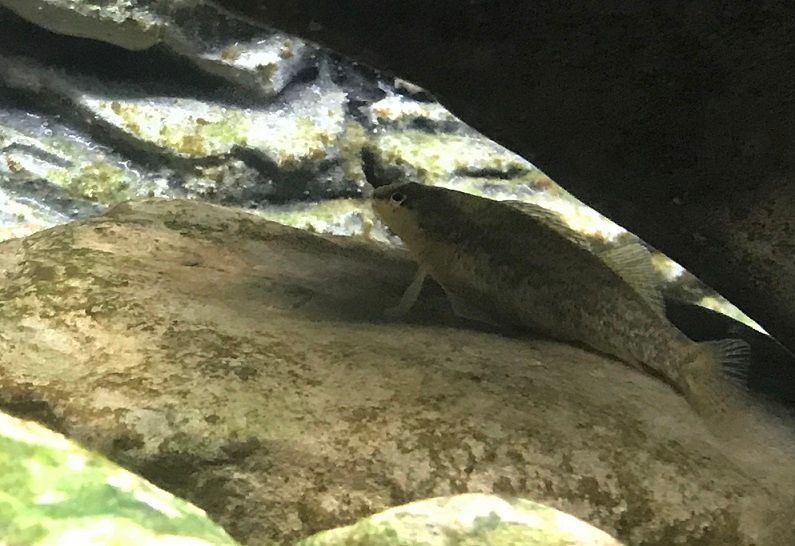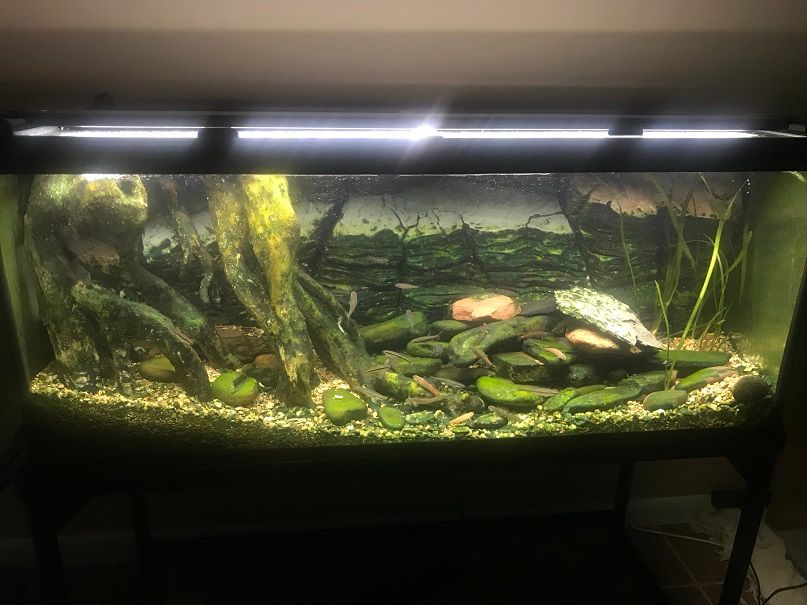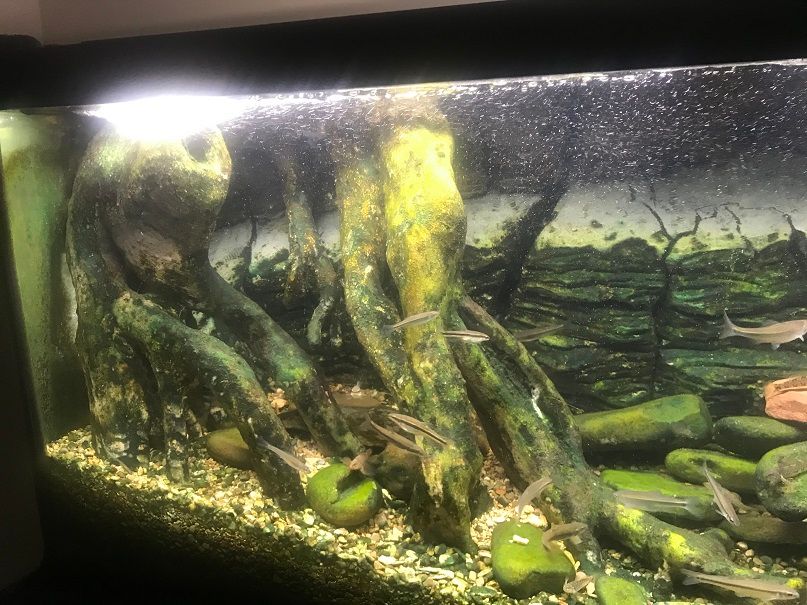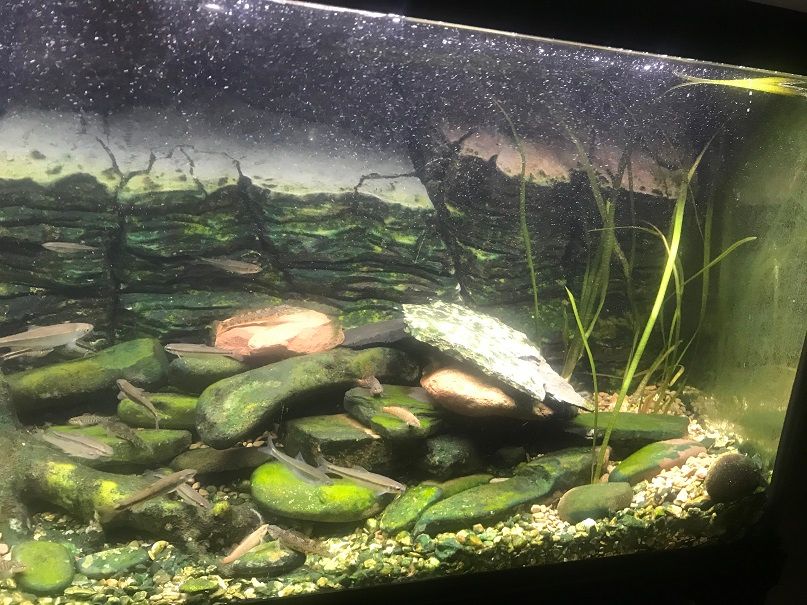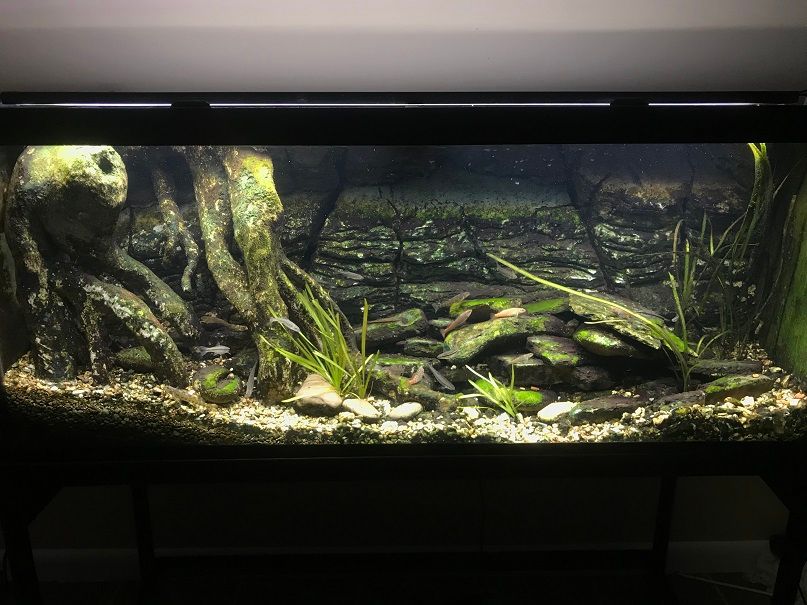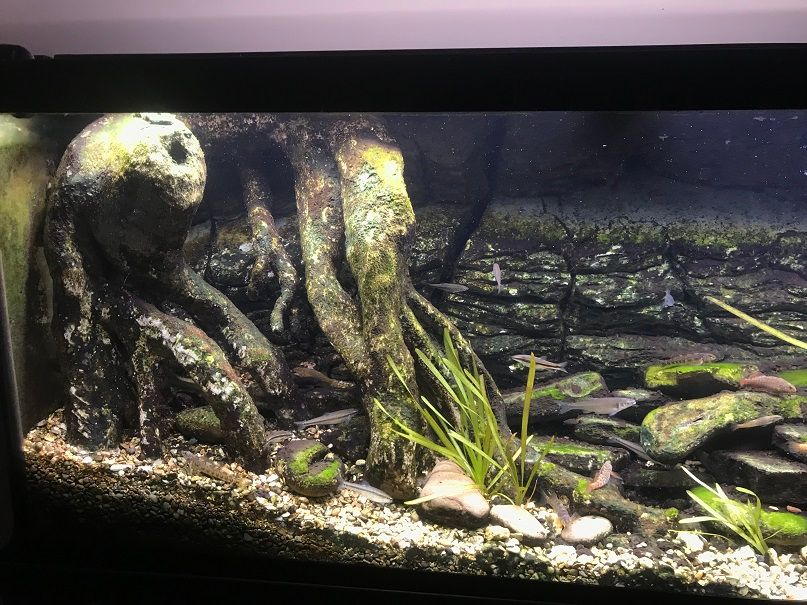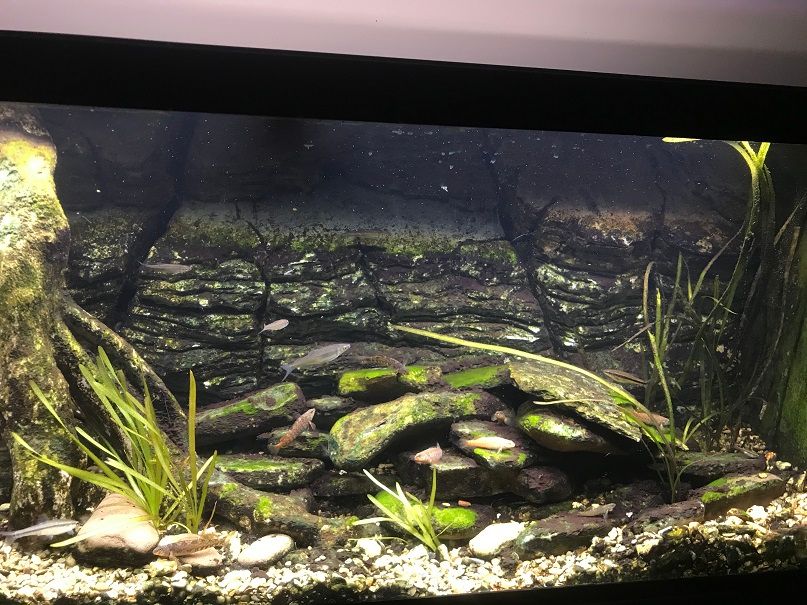Thank you Nick. I plan on adding stonerollers to the tank. I wanted to get out and collect this past weekend, but the weather was a bit too nasty for me. The last time that I went collecting, we caught a juvenile white sucker and a small northern hogsucker, but no stoneroller. Do stonerollers hang out in similar areas as the suckers in the winter? Will the stonerollers feed on the Vallisneria too?
A couple more thoughts on my fish. All of the minnow species seem to enjoy feeding on the algae when I sneak up on the tank. Once they see me, they all stop and beg for food. I really enjoy watching the fish after feeding time, because they pretty much go back to what they were doing before, except that they still forage for the food that I put into the tank for the most part, sometimes still nibble on the algae. They don't have much of an impact on the algae though, but it's still fun to watch. I guess my point is that they eat more of it than I thought that they would.
One of my favorite species is probably one of the more common ones found in Maryland, the longnose dace. They seem to enjoy frolicking with all of the minnows, shiners and dace. And, at times, they just like to sit on the bottom. At other times, you can see them, and the blacknosed dace, dancing in the current eddies behind the roots, darting in and out of the current for no apparent reason, almost like they're playing, during times when they aren't nibbling on the algae on the roots. I currently have two of them. I'd like to add two or three more to the tank.
I wasn't happy with the way that the silverjaw looked after I first got my only one. Pics of them looked much more attractive than they do in the tank. However, it's growing on me. I will try and get two more.
The bluntnosed minnows are interesting too. They like to hide under the rocks and caves in my tank, much more than I imagined that they'd do. They are somewhat the bullies in the tank though. That said, even the biggest one doesn't seem to harm other fish during bullying events. Darters just kind of ignore them, and the shiners turn around and dish it right back. i find the bluish gray spot on their nose interesting. None of these fish have tubercles yet, so if they grow them, the bullying could become more of a problem later on. Sometimes, a couple of these guys will chase each others tail, almost going around in a circle for several seconds. I don't know if it's breeding behavior, or a form of bullying/pecking order stuff, but it's fun to watch.
The blacknosed dace are interesting and I'm happy that I've added them to the tank. The eat well. Both the dace and bluntnosed minnows root their noses in the gravel in search of food often. It's interesting that they check out flaked food, but spit it out, when it's drifting in the tank. But, when they find flakes between the gravel pebbles, the eat it right up and don't spit it out.
The large silvery shiners in my tank are a mystery to me. When I collected them, both Todd and I were pretty sure that they were satinfin shiners. Later, I thought maybe spotfins. But, they lack the white tips on the fins and tail. Also, there seems to be a more pronounced stripe now than when we collected them. Could they be hybrids between either spotfins or satinfins x some other shiner species? Is that possible? I enjoy watching them feed, particularly when they attack food on the surface, almost like trout feeding on mayflies. If they grew to a pound or two, I'm sure that anglers would covet catching them rather than seeing them just as baitfish. Also, I like how all of the shiners, dace, and minnows dart to and fro gobbling up the flakes as they drift through the current and water column. They don't seem to miss anything, and rarely let food make it to the bottom (hence my need to feed brine shrimp or blackworms using a turkey baster to the darters).
The greenside darters are far more aggressive feeders than I ever thought that they would be. They are always the first to get to the turkey baster, often grabbing more than one worm and gulping them down. It's comical to see that sometimes, they get so many, that worms work their way out of their gill, dangling behind them, until they either suck them back in or another fish steals it from them.
The fantail darters seem to be the most territorial, at least within their species. Despite that, they don't seem to stress each other out. Each one seems to keep to their favorite areas in the tank though. It's amazing to me to see how fast they can change colors (the males, I guess), where they all of a sudden have their heads change to a dark color, only minutes or seconds later, to change their mood and go back to their normal color.
Of course, the rainbow darters are my favorite. I have all males, it seems, except for one female. The female is obviously much different, and has a rich gold coloration. I've seen what looked like courtship rituals a few times between the most colorful males and the female. There is one that I thought was a male behaving like that with another male, and it's a much more golden hue, almost the same color as the female, but, has more of the coloration of the tail (albeit faint) as the other males. I still think it's a male, but, is it possible that some females have more of the reddish color than the golden hue female? Or, do all of the females look like the golden one in my tank? These fish are also gluttons for the blackworms and quite aggressive feeders. All but one are not shy at all grabbing food from the turkey baster. There is one small one that is a little afraid of the turkey baster and prefers waiting for food to drift to the bottom most of the time. It will occasionally take food from the baster, but mostly will shy away from it.
I have to be careful not to wait too late to go downstairs to feed and watch my fish. If I wait too long, I wind up not getting enough sleep on work nights and drag all day the next day at work. Watching my tank is so addicting, and time flies!




